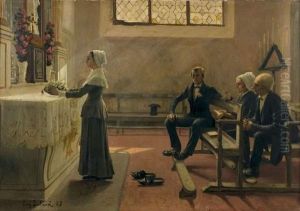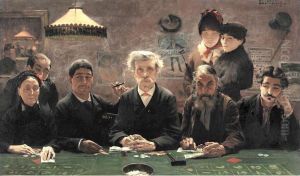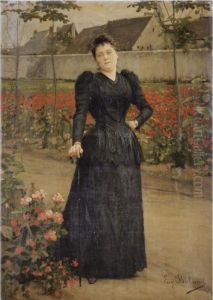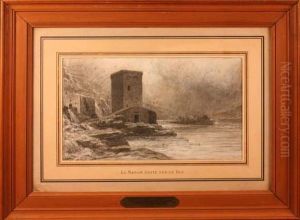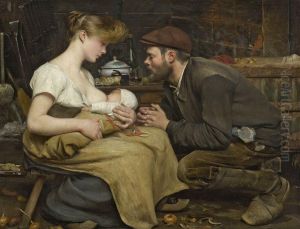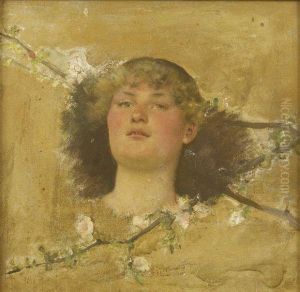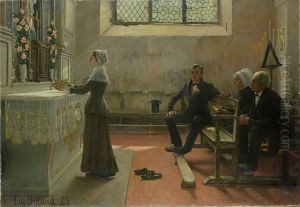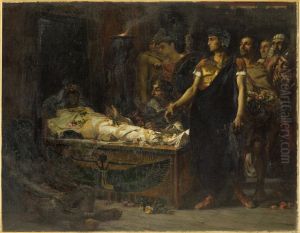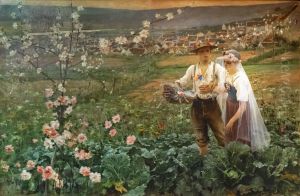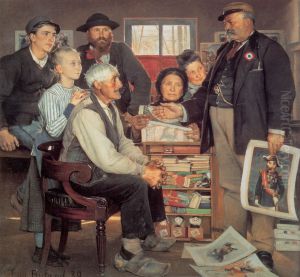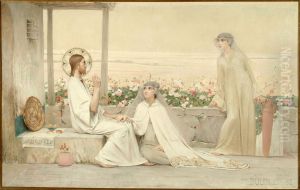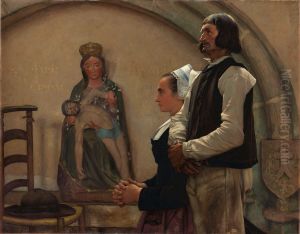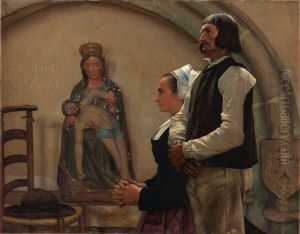Eugene Buland Paintings
Jean-Eugène Buland, known as Eugène Buland, was a notable French painter associated with the Naturalism and Realism movements. Born on October 26, 1852, in Paris, France, Buland demonstrated a strong artistic inclination from an early age. His father was an engraver, which likely influenced his decision to pursue a career in the arts. He began his formal artistic education at the École des Beaux-Arts in Paris, studying under Alexandre Cabanel, a well-respected academic painter of the time.
Buland's work is characterized by a meticulous attention to detail and a dedication to depicting the realities of life, often focusing on the lives of the working class and the rural poor. His paintings are notable for their use of clear light and solid form, which give them a sense of weight and presence. Unlike many of his contemporaries, Buland did not romanticize his subjects but instead portrayed them with dignity and respect. He often included social commentary in his work, subtly critiquing the conditions of the lower classes and the inequalities of society.
In the 1880s, Buland's work began to gain recognition. He started exhibiting at the Paris Salon, an annual art exhibition in France, and received several awards for his paintings. His style evolved over the years, incorporating elements of the emerging Symbolist movement while maintaining his commitment to Realism. Despite his success, Buland never became a part of any particular artistic group or movement, preferring to maintain his independence.
Throughout his career, Buland received various commissions for public works, including murals for town halls and other civic buildings. These projects allowed him to expand his artistic repertoire and contributed to his reputation as a painter of the people. Buland's work has been compared to that of other Realist painters such as Gustave Courbet and Jean-François Millet, although his unique approach and thematic concerns distinguish his oeuvre from theirs.
Eugène Buland's legacy is that of a painter deeply engaged with the human condition, whose works continue to resonate due to their emotional depth and technical prowess. He passed away on February 18, 1926, in Charly-sur-Marne, France, leaving behind a body of work that continues to be studied and appreciated for its insight into the human experience and its uncompromising representation of reality.
